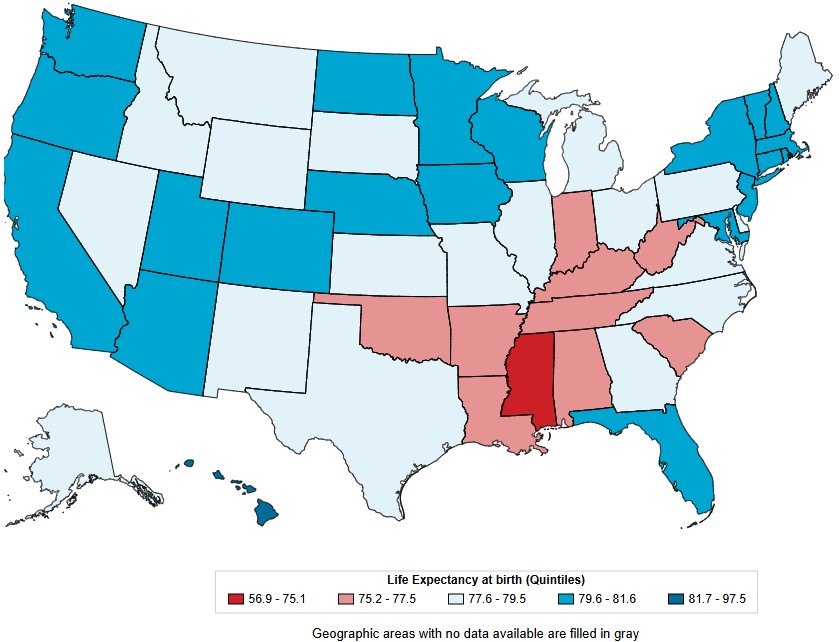Life Expectancy
Life expectancy (LE) is a statistical measure of the average time an organism (in our case human) is expected to live, based on the year of its birth, its current age and other demographic factors including gender. There are great variations in life expectancy between different parts of the world, mostly caused by differences in public health, medical care, and diet. Comparing life expectancies from birth across countries can be problematic. There are differing definitions of live birth versus stillbirth even among more developed countries, and less developed countries often have poor reporting.
Worldwide, the average life expectancy at birth was 73.1 years and the healthy life expectancy was 63.7. Healthy life expectancy is an adjusted value that measures the average number of years a person can expect to live in “full health.” The healthy life expectancy value considers years spent living with illness or disability. This means that the healthy life expectancy will always be lower than the life expectancy value for a given population. Globally, the average life expectancy is 69.8 years for men and 74.2 years for women (World Health Organization[WHO], 2024). Overall life expectancy at birth had increased from 66.8 years in 2000 to 73.3 years in 2019, and healthy life expectancy increased from 58.3 years to 63.7 years. Gains in life expectancy are due to improvements in maternal and child health, as well as reduced HIV, tuberculosis and malaria infections (WHO, 2022)
In the United States, overall life expectancy is 78.4 years (Center for Disease Control [CDC], National Center for Health Statistics, December 2024). There are intracultural differences in life expectancy by gender, race/ethnicity, and location. The life expectancy for men in the United States is 75.8 years and 81.1 years for women. (Center for Disease Control, 2023). Life expectancy in the United States is highest for Asian people, 84.5 years and lowest for Native Americans and Alaska Natives, 67.9 years. The average life expectancy was 80.0 years for Hispanic people, 77.5 years for White people and 72.8 years for Black people(Center for Disease Control, National Vital Statistics Report, 2023).

There are also differences in life expectancy based on geographic location. According to the Center for Disease Control National Center for Health Statistics, in Hawaii has the highest life expectancy in the United States, 82.0 years. There are several states with life expectancy over 80.0 years including: California, Colorado, Connecticut, Florida, Massachusetts, Minnesota, New Hampshire, New Jersey and New York. The state with the lowest life expectancy was Mississippi.
Overall, the United States ranks 72 globally in life expectancy (CIA, Factbook, 2022; “List of countries by Life Expectancy”, 2023). The highest life expectancy is found in Monaco (Europe), 89.6 years and the lowest life expectancy is found in Afghanistan, 53.6 years (Middle East) (CIA Factbook, 2022). Ranking 72 in the world in life expectancy doesn’t sound so bad when you consider over 224 countries contribute data but it is problematic and concerning given the comparative abundance of resources of the United States. Some argue that the United States, with access to health sciences, technology, and supported innovation should be a global leader in life expectancy rates with a much higher global ranking.
Disparities in Life Expectancy
Disparities (or differences) in life expectancy are the result of several factors. In general, the wealthiest countries have much longer life expectancies than poorer countries. Whether people in a country have access to education, housing, jobs, health insurances and hospitals has a direct impact on the life expectancy of a country. Individual behaviors can also impact life expectancy including smoking, diet and participating in unhealthy activities that can result in early death. Additionally, whether or not a person has a disability or experiences persistent discrimination can also shorten life expectancy.

